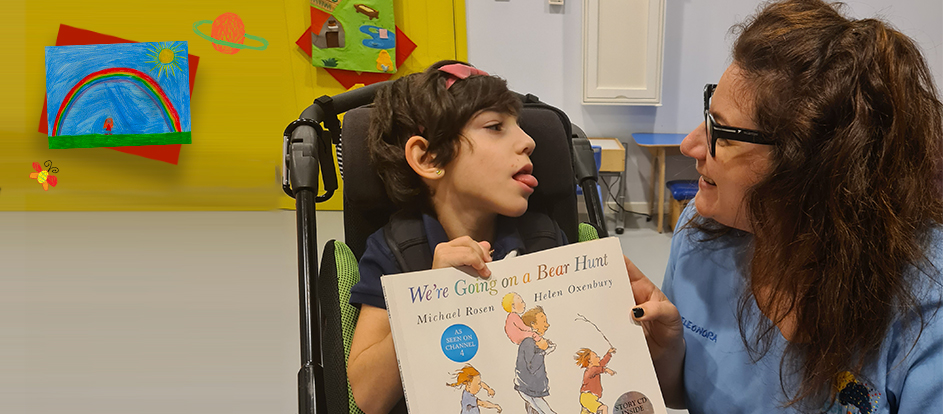
As the world observes the International Day of Education, we dedicate this month’s blog entry to the role of occupational therapists in helping super special children access education.
The United Nations General Assembly proclaimed 24th January as International Day of Education highlighting the concepts of ‘The Right to Education’ from The Universal Declaration of Human Rights and ‘Inclusive Education’ from The Convention on the Rights of the Child.
As defined by the World Federation of Occupational Therapist (WFOT), the role of the occupational therapist in accessing education is to enable, support and promote full participation and wellbeing of students, limiting or decreasing the barriers to participations.
For children with additional needs, access to education and inclusive education are paramount and they play an essential role in the social, emotional, cognitive and motor development.
How can the occupational therapist support your child in accessing education?
Pre-school age
The occupational therapist can support your child developing school readiness skills. These include social-emotional, cognitive, language and literacy, and physical development. In addition, coping with sensory needs, achieving independence, maintaining attention and concentration, managing behaviours are fundamental in supporting full participation in schools. For children with additional needs, school readiness skills are often delayed or impaired, therefore an individualised level of support is needed to assist the development of their full potential.
Based on the needs of your child, the occupational therapist will devise a plan of intervention to support the development of these skills. Through a play-based and child-centred approach, the child will gradually build competencies and confidence to achieve a successful start to school.
Examples of areas where the occupational therapist can help are:
- Self-care skills, such as toilet training, dressing and undressing, independent feeding and drinking.
- Sleep hygiene and management of sleep difficulties.
- Self-regulation including managing sensory needs.
- Play and interaction with others by working on joint attention, turn taking, sharing and collaborative play.
- Cognitive skills, such as recognising colours, numbers, shapes; counting; understanding concepts of size, location, quantity and quality.
- Motor skills, consisting in development of fine and gross motor skills e.g. development of pre-writing skills, access to playground and participation in physical education.
- Organizational skills, such as managing routine and developing independence.
- Attention and concentration skills, such as listening, following instructions and completing tasks independently.
Primary school aged children:
The main goal of occupational therapy in school aged children is to facilitate the participation of the students in daily school life, meeting the specific needs of the student. These needs often involve social interaction, behaviour, classroom performance, and independence in the activities of daily living and school-based activities. The occupational therapist works to find solutions to reduce the difficulties students have, helping them get the most from life and be independent.
The Occupational Therapist works on the following educational occupations:
- Accessing the school setting and moving around the school environment: managing stairs, accessing playground, participating in physical education, managing sensory environment.
- Producing schoolwork, including handwriting, use of scissors, use of school tools, and accessing IT.
- Task behaviour and completion such as initiating and carrying through a task, maintaining attention, working independently, problem solving and organization skills.
- Managing school routines such as organization of school materials, packing school bag and managing school responsibilities.
- Managing school self-care activities including independence during lunch time, changing for physical education, toileting.
- Relationships with other students, including initiating and maintaining relationships, work collaboratively with others, sharing, and turn taking.
- Play-time or play-ground activities including hobbies and preference of play.
- Behaviour including coping with difficulties, managing change in routine etc.
The occupational therapy collaborates with parents and school staff to identify the problems and create solutions, considering the child, the activity, and the setting.
The goal is to promote participation through:
- Adapting activities
- Reducing environmental barriers
- Helping plan relevant instruction activities
- Recommending equipment to increase learning access and participation
- Direct intervention to address and practice specific skills
In addition to clinic sessions, in order to support your child’s participation in school the occupational therapist can organise regular meetings with school staff. Working alongside the teacher and the school staff, the occupational therapist can meet regularly with your child’s teacher and school staff to help them identify and implement learning strategies that align with your child’s learning style. The therapist can also provide recommendations concerning materials, tools and technology as well as instructional, environmental, and adaptive accommodations that facilitate learning and development, such as postural solutions, writing implements, and adapted worksheets.
Children not attending school:
For children with additional needs that are not currently attending school, at High Hopes Pediatric Centre the occupational therapy team work on supporting the child in building skills and competencies to provide foundation of learning experiences.
The aims of these sessions are to provide children with additional needs with educational experiences tailored to their unique needs. These include alternative education activities targeting physical, cognitive, visual, social, and emotional competence as well as positive attitudes toward learning.
Through an individualised learning programme, the child is participating in age-appropriate meaningful activities targeting literacy and numeracy skills, communication and social skills, and visual and motor skills.
Examples of the learning programme topics are:
- Colours, shapes, numbers, letters
- Animals
- Body parts
- Spatial and quantity concepts
- Orientation to time to help the child orient to the day of week, date, and the daily routine
- Special occasions during the year
- Story
- Recognising own name
The learning programme is planned following a developmental approach using multi-sensory learning experiences. In addition, individualised strategies and tools are used to allow access to the educational materials. Examples are: use of the eye gaze technology, use of multi-sensory story, adaptation of worksheets using cortical visual impairment (CVI) or low vision strategies, use of adapted tools.
If you have any concerns about your child’s access to education, please contact the occupational therapy team at High Hopes. We are happy to answer any questions you may have.
Sources:
- Can Child. Partnering for Change web page. Available at: https://canchild.ca/ en/research-in-practice/current-studies/partnering-for-change
- Early Intervention Foundation (2018) Realising the potential of early intervention. London: Early Intervention Foundation. Available at: https://www. eif.org.uk/report/realising-the-potential-of-early-intervention
- Hutton, E, Tuppeny, S, Hasselbusch, A. (2016) Making a case for universal and targeted children’soccupational therapy in the United Kingdom. British Journal of Occupational Therapy Volume:79 issue:7,450-453.
- Royal College of Occupational Therapist. Managing well in education. Available at: https://www.rcot.co.uk/promoting-occupational-therapy/occupational-therapy-posters-and-leaflets
- WFOT Word Federation of Occupational Therapist, Occupational Therapy Service in School-based Practiced for Children and Youth (2016)





